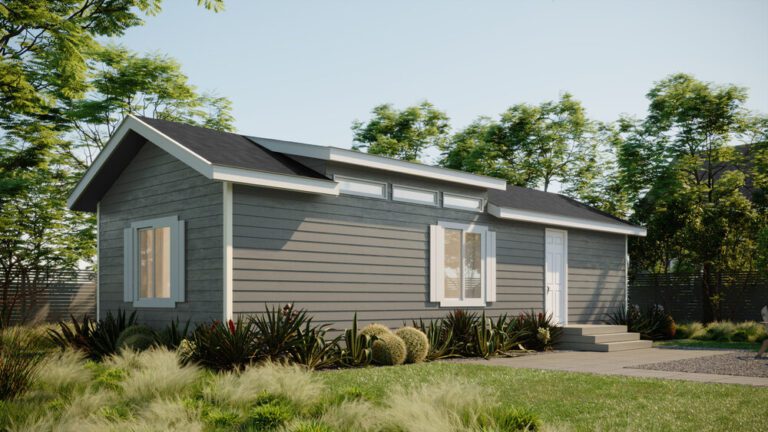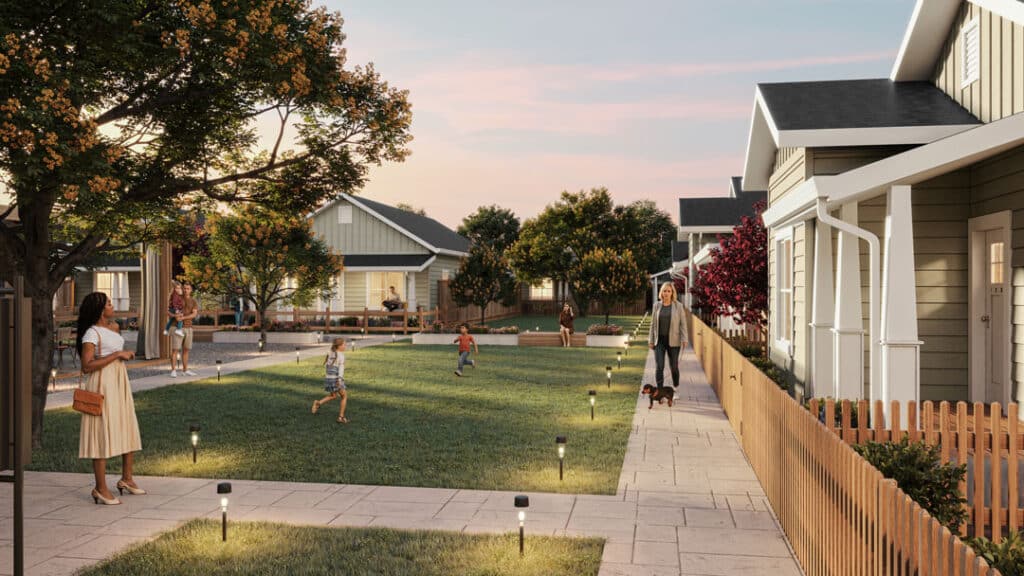- topics | Financing
Top ADU Financing Options

Figuring out the options for financing an ADU can lead you down a rabbit hole of research. You won’t find the same range of conventional mortgages as for a primary home, and the available types of loans can be confusing. So how do you get the money to build an ADU? Here we’ll explain the most popular options.
1. Cash-out refinance
This is a fancy way of saying that you’re getting a new mortgage on your home for an amount that pays off your old mortgage and pulls extra cash out from the value of your equity. You then use that cash to buy your ADU. You’ll pay all the typical refinancing fees, but a cash-out refinance generally offers better interest rates than either a home equity line of credit or a second mortgage. This is the most common and simplest option for those with a good amount of equity in their primary home.
2. Borrowing from family or friends
If your loved ones have money to spare, or perhaps just better credit than you do, consider tapping into their goodwill by working out a loan. Pros: The repayment terms can be whatever you both decide, and you’ll be dealing with someone who cares about you personally. Cons: The lender might lord it over you every chance they get, it might change your relationship even if you follow the terms to a T, and if you default…well, let’s not go there.
3. Cash savings, including retirement accounts
If you have enough cash in a regular savings account, using it to pay for your accessory dwelling unit is a no-brainer. No interest, no loan paperwork, no bank to bug you about repayment.
You can also borrow from your retirement fund, such as an IRA or a 401(k), which is your own cash as well. You’ll have to pay the loan back within a specified time period (usually five years) and with interest—typically the prime rate plus one or two percentage points. But all that interest will go right back into your retirement fund. You also can withdraw the money outright, but depending on your age, you may have to pay an early-withdrawal penalty. And be cautious about dipping into retirement funds for a home purchase of any kind, so you’re not left high and dry when you do retire.

4. Home equity line of credit or loan
Leveraging the equity in an owned home is a common way to pay for an ADU. There are two types of home equity financing:
Home equity line of credit (HELOC): This is a revolving line of credit, typically at a variable interest rate. A lender approves credit up to a certain amount (usually up to 80 percent of the value of your primary home), and then you can borrow from that to pay for your unit and any related costs. You can sometimes find HELOCs without fees or closing costs, but HELOCs in general are less available today than in the past; many banks have stopped offering them in many situations.
Home equity loan (aka second mortgage): This is a loan for a fixed amount, for a term typically shorter than the first mortgage. As with a first mortgage, you’ll have to pay closing costs and fees such as for an appraisal, credit report, and more; but your first mortgage and its rate stay intact.
5. Renovation loan or construction loan
Unlike loans based on the existing equity in your primary home, a renovation loan to pay for an ADU is based on the price your home will be valued at once all the improvement work is finished. (Building an in-law unit is considered a home improvement.) If you have less than 30 to 40 percent equity in your primary home, this might be a good option to consider. Note, however, that the bank will want to approve the builder and will release funds over time as construction progresses—adding hassle and complexity for everyone involved.
Interest rates tend to be slightly higher than for refinancing (about 0.125 percent), you’ll have to pay closing costs, and it’s a short-term loan (usually a year or less). But often a renovation loan can be a one-time close, meaning that any remaining debt when the term is up is automatically converted to 30-year financing—so, there’s no reapplying or additional origination fees.
6. Personal loan or line of credit
If you have no savings, don’t own a home yet, have no loved ones who can help, and have good credit and a sizable income, your only option may be getting a personal loan or line of credit from a bank or credit union, or drawing on a credit card. All of these typically are free to set up, but the interest rates are so high that you should consider them a last resort, and you likely won’t be able to borrow as much as with other options ($100,000 is generally the max).
7. Private-money loans
Private-money lending, or hard-money lending, can be a good fit for real estate investors or multifamily-property owners. These loans, which are given by an organization or a wealthy individual, require rental income streams to support paybacks and property valuations, and are often designed for a short-term bridge or construction period. The interest rates are higher, but the terms are often discretionary, to allow for creativity and flexibility in their structure as well as simpler, faster underwriting and approvals.
8. Government assistance
Both the federal government and local agencies offer financial help for ADU buyers either directly or indirectly.
California only: There are many state grants and other financial incentives for ADU buyers in California, including the CalHome Program, Local Early Action Planning (LEAP) grants, and the Local Housing Trust Fund (LHTF) Program. Many of these stem from ADU funding laws that went into effect January 1, 2021, so if you looked before and didn’t find anything, look again!
All states: The U.S. Department of Housing and Urban Development (HUD) has a housing choice voucher program, which guarantees market-rate rental income by paying the difference between what a low-income renter could afford and the market rate. While this doesn’t directly help pay for ADU construction, it does reduce the risk in taking out a loan to build an ADU. And the U.S. Department of Justice offers financial benefits and protections to service members and others—including dependents and loan cosigners in some cases—via the Service members Civil Relief Act.
Every state also has housing finance agencies created to meet affordable-housing needs. Assistance programs vary, so contact your local agency directly.
Alternative, less common financing options
Tech advances and the rise of crowdsourcing have been a boon for ADU buyers, leading to peer-to-peer financing options. Point invests in a portion of homeowners’ equity, paying cash for construction costs. PeerStreet is a “two-sided marketplace for investing in real estate debt.” And there are scads of other general peer-to-peer lending services online. While these are all too new to put them in the top ADU financing options, they’re worth checking out.

Wondering whether you can afford an ADU?
Begin with a free, zero-commitment assessment from Villa. Units start at $199,000 for a one-bedroom, all-inclusive (even permits).



